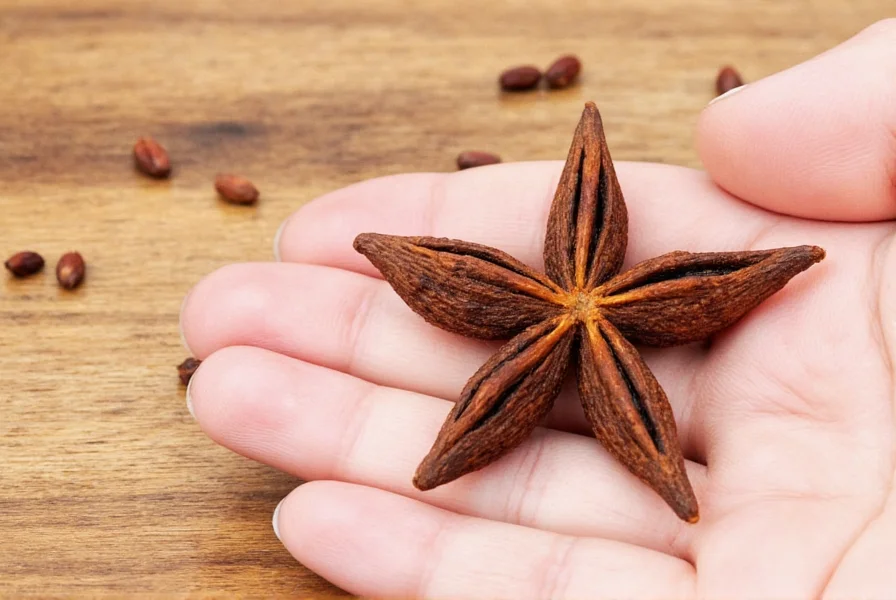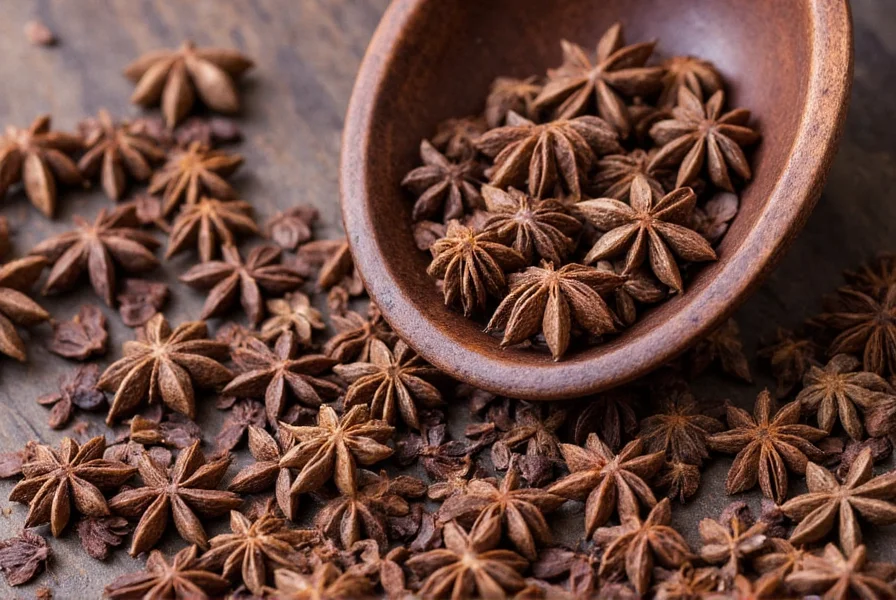Star anise (Illicium verum), the star-shaped spice native to Southwest China and Vietnam, has been used in traditional medicine for centuries. Modern research continues to validate many of its therapeutic properties while revealing new potential applications. This comprehensive guide examines the evidence-based benefits of star anise, separating scientific fact from folklore while providing practical usage recommendations.
What Is Star Anise?
Star anise is the fruit of a small evergreen tree in the magnolia family. Each fruit consists of 6-8 carpels arranged in a distinctive star shape, with each carpel containing a single seed. The spice has a distinctive licorice-like flavor due to its high anethole content (80-90% of its essential oil composition). Unlike anise seed (which comes from a different plant), star anise grows on trees rather than herbaceous plants.

Scientifically Supported Health Benefits of Star Anise
Powerful Antioxidant Properties
Star anise contains numerous antioxidant compounds including linalool, limonene, and various polyphenols. A 2020 study published in Antioxidants found that star anise extract demonstrated significant free radical scavenging activity, outperforming several other common spices in laboratory tests. These antioxidants help combat oxidative stress, which contributes to chronic diseases and aging processes.
Natural Anti-Inflammatory Effects
The anti-inflammatory properties of star anise make it valuable for managing conditions involving inflammation. Research in Journal of Ethnopharmacology indicates that compounds in star anise can inhibit inflammatory pathways by reducing pro-inflammatory cytokines. This explains its traditional use for soothing sore muscles and joints when applied topically as an infused oil.
Digestive Health Support
One of the most well-documented benefits of star anise is its positive impact on digestive health. The spice stimulates digestive enzyme production and helps relax gastrointestinal muscles. A clinical review in Phytotherapy Research noted that star anise tea effectively reduces bloating, gas, and indigestion. Many cultures serve star anise after meals specifically for its carminative properties that prevent gas formation.
Respiratory System Benefits
Star anise has been traditionally used to alleviate respiratory conditions, and modern research supports this application. The compound anethole acts as an expectorant, helping loosen mucus in the airways. A 2019 study found that star anise extract demonstrated bronchodilatory effects, potentially benefiting those with asthma or bronchitis. Many natural cough syrups incorporate star anise for its soothing properties when dealing with colds and flu symptoms.
Antimicrobial and Antiviral Activity
Perhaps one of star anise's most significant properties is its broad-spectrum antimicrobial activity. Laboratory studies show effectiveness against bacteria including E. coli and S. aureus, as well as certain fungi. Notably, star anise is the primary natural source of shikimic acid, a key ingredient in the antiviral medication oseltamivir (Tamiflu). While star anise itself isn't a treatment for influenza, its shikimic acid content contributes to important pharmaceutical applications.
| Nutrient | Amount per 100g | Key Health Relevance |
|---|---|---|
| Calories | 337 kcal | Energy provision |
| Dietary Fiber | 15.9 g | Digestive health support |
| Vitamin C | 1.6 mg | Antioxidant properties |
| Calcium | 119 mg | Bone health |
| Iron | 21.6 mg | Blood health and oxygen transport |
| Magnesium | 13 mg | Nerve and muscle function |
How to Use Star Anise for Maximum Benefits
To harness the health benefits of star anise, consider these practical applications:
- Star anise tea: Steep 1-2 whole pods in hot water for 10 minutes to create a soothing digestive tea
- Culinary uses: Add whole pods to soups, stews, and braises (remove before serving)
- Infused oil: Create a topical oil by steeping crushed star anise in carrier oil for muscle relief
- Homemade cough syrup: Combine with honey and ginger for respiratory support

Safety Considerations and Potential Side Effects
While star anise offers numerous health benefits, proper usage is crucial. Japanese star anise (Illicium anisatum) is toxic and should never be consumed, though it's rarely found in Western markets. True star anise (Illicium verum) is generally safe in culinary amounts, but excessive consumption may cause:
- Nausea or vomiting
- Allergic reactions in sensitive individuals
- Potential interactions with blood-thinning medications
- Neurological effects in infants when used in excessive amounts
Pregnant women should consult healthcare providers before using star anise medicinally, as high doses may stimulate uterine contractions. When using star anise for infants or children, extreme caution is advised due to potential neurological effects.
Conclusion: Evidence-Based Benefits of Star Anise
Star anise provides multiple scientifically supported health benefits ranging from antioxidant and anti-inflammatory effects to digestive and respiratory support. The spice's rich composition of bioactive compounds, particularly anethole and shikimic acid, explains its therapeutic properties. When used appropriately in culinary or moderate medicinal amounts, star anise can be a valuable addition to a health-conscious lifestyle. As with any natural remedy, understanding proper usage, potential side effects, and limitations is essential for safe and effective application of star anise benefits.
Frequently Asked Questions
What is the difference between star anise and anise seed?
Star anise comes from an evergreen tree (Illicium verum) and has a star-shaped fruit, while anise seed comes from a flowering plant (Pimpinella anisum). Though both contain anethole and have similar licorice flavors, they're botanically unrelated. Star anise has higher shikimic acid content, making it valuable for pharmaceutical applications.
Can star anise help with menstrual cramps?
Research suggests star anise may help alleviate menstrual discomfort due to its antispasmodic and anti-inflammatory properties. A study in Complementary Therapies in Medicine found that women who consumed star anise tea experienced reduced pain intensity compared to placebo. However, more extensive clinical trials are needed to confirm these effects.
How much star anise is safe to consume daily?
For culinary use, 1-2 whole pods per serving is generally considered safe. When using medicinally, most traditional preparations use 1-3 grams of dried star anise per day. Exceeding 5 grams daily may increase risk of side effects. Always consult with a healthcare provider before using star anise for medicinal purposes, especially if you have existing health conditions or take medications.
Does star anise have any proven benefits for blood sugar control?
Emerging research suggests potential benefits. A 2021 animal study published in Biomedicine & Pharmacotherapy found that star anise extract improved insulin sensitivity and reduced blood glucose levels in diabetic rats. While promising, human clinical trials are needed before definitive claims can be made about star anise for blood sugar regulation in people.
Can I use star anise for sleep improvement?
Star anise contains compounds with mild sedative properties that may promote relaxation. While not as potent as dedicated sleep aids, drinking star anise tea before bed may help some people unwind. The spice's digestive benefits can also prevent discomfort that might interfere with sleep. However, scientific evidence specifically linking star anise to improved sleep quality remains limited.











 浙公网安备
33010002000092号
浙公网安备
33010002000092号 浙B2-20120091-4
浙B2-20120091-4